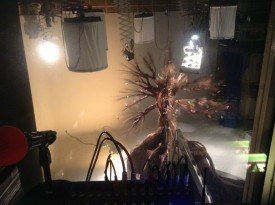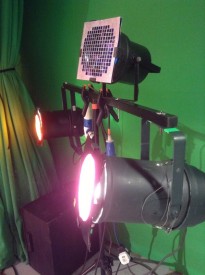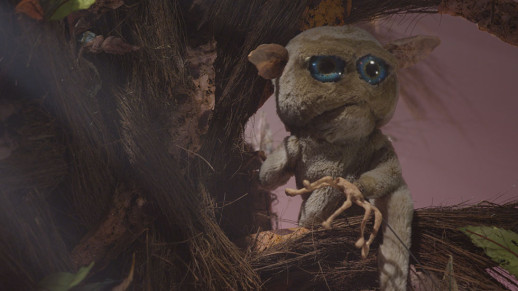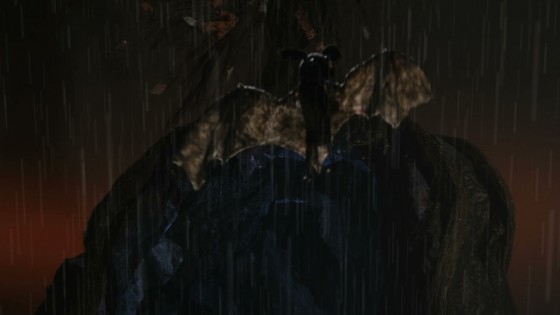 This week the third annual Big League Cine Summit is taking place: two days of online masterclasses with top commercial, TV and feature film cinematographers. If you missed this educational and inspirational free event, here are the best tips I culled from day one’s sessions:
This week the third annual Big League Cine Summit is taking place: two days of online masterclasses with top commercial, TV and feature film cinematographers. If you missed this educational and inspirational free event, here are the best tips I culled from day one’s sessions:
Frankie DeMarco – “Composition and Camera Operating for the Big Screen”
- The advantage for a DP of working with a separate camera op is that you have a second opinion.
- Try to think like an editor. What specific shots do you need to tell the story? Can you do it in a “oner”?
- Lots of angles/coverage can kill performances and make the audience overly aware of the camera.
- If you need to shift position for comfort, do it during a part of the take that the editor is unlikely to use.
- You can sometimes get away with crossing the line if your singles are dirty.
- Use clean singles to show that characters are not connecting with each other.
- Single point perspective, a.k.a. formal composition (framing the subject centrally) can be very powerful.
- Lighting for silhouette can make a simple moment highly evocative.
- The best composition reflects character relationships, perhaps using layers and depth.
- Good composition should draw the eye to the right part of the screen and not distract the audience.
- Good cinematography should tap into the emotion of the scene and the character whose eyes we’re seeing it through.
- When watching the blocking, think about the emotions. Let the scene tell you how it should be shot.
- Let the lens talk to you. Try watching the blocking through different lenses and see what feels right.
- A great static frame that the actor can move around in trumps panning around with the actor.
- Use a dolly-in for an emotional moment, but a zoom-in to show a character having a thought or idea.
- Check out Stanley Kubrick and William Friedkin films to see excellent use of zooms.
- Use a long lens to disconnect your subject from their surroundings.
- Play the first take safe, and then you can try tagging hand-props or pulling focus to background characters on later takes.
- “When in doubt, turn it out.” i.e. beware of over-lighting!
- Don’t be afraid of changing f-stops from angle to angle to maintain a consistent softness of background when your background is different distances away from different subjects.
- Don’t worry about continuity too much. “The set is made of rubber.”
- Try unusual compositions. Be willing to fail.
Kevin Shahinian – “Story Telling Techniques: Adding Massive Production Value”
- In high-end events shooting, try to get the organisers to pick rooms that will work for sun orientation.
- Use a long lens to create a potentially unsettling sense of voyeurism.
- To build tension and unsettle the audience, short-side your subject and show lots of empty background.
- In an over-the-shoulder shot, add power to the foreground character by having them dominate the frame.
- With non-actors, shoot candid footage; you may capture genuinely great moments. Use action verbs to direct them, rather than talking in terms of emotions.
Rasmus Heise – “Extraordinary Cinematography with Minimal Lighting”
- Design lighting that works from all directions, to minimise set-up times.
- Use more than one colour to add depth.
- Dot practicals around where possible, to give you sources that will work for different angles.
- Focus on one key light source in a scene. Everything else is just a bonus.
- Fluorescent tubes and sodium vapour lamps can be great low budget, low wattage solutions.
- Philips makes fluorescent tubes with high CRI.
- Wet down your exterior sets to add contrast and nice reflections.
- Silhouette shots are quick, cheap and look great.
Matthew Santo – “Commercial Lighting: How to Light Fashion vs. Action”
- Photographing commercials is all about heightened reality, perfect sunsets, perfect skin, etc.
- It requires a lot of passive lighting: bounce cards, negative fill, contrast control.
- On beauty and fashion commercials:
- Your background can set a darker mood even if the talent has to be lit flatly for beauty.
- Know your talent’s face in advance – e.g. do they have soft or hard features? Deep-set eyes?
- What side is the talent’s hair parted on? This could affect your decision on which side to key from.
- Try to make sure the make-up room’s lighting matches the colour of your lighting on set, so the MUA doesn’t get any nasty surprises on set.
- Use Briese lights for beauty. They have hard- and softlight qualities.
- Chimeras may be better for talent with less defined features.
- Reduce skin texture by pushing fill through large frames or bounce, e.g. 12×12 frames.
- Hard backlight looks great but beware of fly-away hair.
- Combine hard and soft sources for backlight that has punch but wraps and doesn’t create shadow issues.
- There’s a range of Cosmetic lighting gels that add a little warmth and diffusion.
- Use a low overall light level for talent comfort and less squinting!
- On sport and action commercials:
- It’s about movement and body definition. Backlight and sidelight are most important.
- Edgelight defines the talent’s body shape. Toplight adds muscle definition.
- Lens flares add dynamism but reduce contrast, so light high-key.
- Use higher light levels for highspeed shooting and to maintain focus as people move.
Stefan V. Borbely – “Deconstructing High End Car Commercials”
- Rather than lighting the car, light the environment and the car will reflect that environment.
- For exteriors, wait for dramatic skies because the car will reflect these.
- Silver cars are the easiest to light.
- Use long fluorescent tubes or long reflectors to make seamless long highlights on the bodywork.
- Use Cinema 4D to test your lighting set-ups for reflections.
- For night exteriors, take stills on the recce and note your exposure settings.
- Bagolights are great for creating streaks of light on cars.
- Fisherlights are a good substitute for the sky.
- If you can’t afford Fisherlights overhead, put lamps on the floor and shoot them up into big polyboards.
- Schedule your exterior shots for sunrise and sunset, and shoot inside the car in the middle of the day.
There is still time to get free access to the summit at bigleaguecinesummit.com Stay tuned to neiloseman.com for top tips from day two.






